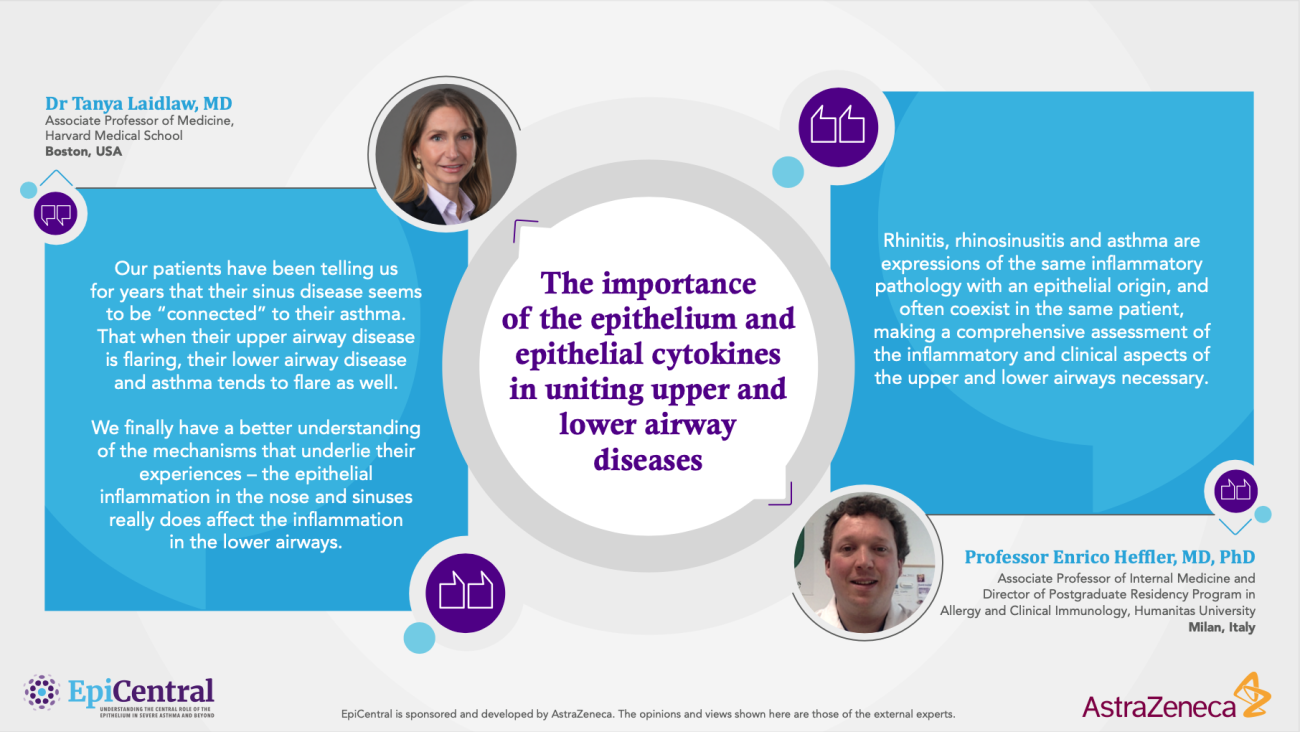References
1. Fokkens W, Reitsma S. Otolaryngol Clin North Am 2023;56:1–10, 2. Heijink IH, et al. Clin Exp Allergy 2014;44:620–630, 3. Jakwerth CA, et al. Cells 2022;11:1387, 4. Kicic A, et al. J Allergy Clin Immunol 2020;145:1562–1573, 5. Yii AC, et al. Allergy 2018;73:1964–1978, 6. Bousquet J, et al. Nat Rev Dis Primers 2020;6:95, 7. Bartemes KR, Kita H. Clin Immunol 2012;143:222–235, 8. Dykewicz MS, et al. J Allergy Clin Immunol 2020;146:721–767, 9. Bachert C, et al. J Asthma Allergy 2021;14:127–134, 10. Lee S, Lane AP. Curr Infect Dis Rep 2011;13:159–168, 11. Brzost J, et al. Diagnostics (Basel) 2022;12:2301,12. Orlandi RR, et al. Int Forum Allergy Rhinol 2016;6(Suppl. 1):S3–S21, 13. Fokkens WJ, et al. Rhinology 2020;58(Suppl. S29):1–464, 14. Beard S. Prim Care 2014;41:33–46, 15. Licari A, et al. Front Pediatr 2017;5:44, 16. Stevens WW, et al. J Allergy Clin Immunol Pract 2016;4:565–572, 17. Roan F, et al. J Clin Invest 2019;129:1441–1451, 18. Adivitiya, et al. Biology (Basel) 2021;10:95, 19. Zhang R, et al. Int Arch Allergy Immunol 2023;184:1–21, 20. Laulajainen-Hongisto A, et al. Front Cell Dev Biol 2020;8:204, 21. Crystal RG, et al. Proc Am Thorac Soc 2008;5:772–777, 22. Davis JD, Wypych TP. Mucosal Immunol 2021;14:978–990, 23. Doeing DC, Solway J. J Appl Physiol (1985) 2013;114:834–843, 24. Staudacher AG, et al. Ann Allergy Asthma Immunol 2020;124:318–325, 25. Stevens WW, et al. J Allergy Clin Immunol Pract 2019;7:2812–2820, 26. Newton JR, Ah-See KW. Ther Clin Risk Manag 2008;4:507–512, 27. Chen SY, et al. Rhinol Online 2022;5:157–173, 28. Claeys N, et al. Front Allergy 2021;2:761388, 29. Hao D, et al. J Inflamm Res 2022;15:5557–5565, 30. Laidlaw TM, et al. J Allergy Clin Immunol Pract 2021;9:1133–1141, 31. Deng H, et al. J Asthma Allergy 2021;14:839–850, 32. Liu R, et al. Front Immunol 2021;12:530488, 33. Sehmi R. Thorax 2017;72:591–593, 34. Cho SH, et al. J Allergy Clin Immunol Pract 2016;4:575–582, 35. Koeller K, et al. Front Microbiol 2018;9:643, 36. Ramakrishnan VR, et al. J Allergy Clin Immunol 2015;136:334–342, 37. Head K, et al. Cochrane Database Syst Rev 2016;4:CD011991, 38. Peters AT, et al. Allergy Asthma Proc 2022;43:435–445, 39. Smith KA, et al. Int Forum Allergy Rhinol 2019;9:402–408, 40. Hellings PW, et al. Allergy 2017;72:1657–1665, 41. Sin B, Togias A. Proc Am Thorac Soc 2011;8:106–114, 42. Savouré M, et al. Clin Transl Allergy 2022;12:e12130, 43. Wise SK, et al. Int Forum Allergy Rhinol 2018;8:108–352, 44. Small P, et al. Allergy Asthma Clin Immunol 2018;14:51, 45. Liu Y, et al. J Immunol Res 2022;2022:4351345, 46. Shaaban R, et al. Am J Respir Crit Care Med 2007;176:659–666, 47. Kaliner MA. World Allergy Organ J 2009;2:98–101, 48. Greiwe JC, Bernstein JA. J Clin Med 2019;8:2019, 49. Heffler E, et al. Clin Exp Allergy 2018;48:1092–1106, 50. Shamil E, Hopkins C. Otolaryngol Clin North Am 2023;56:157–168, 51. Miglani A, et al. Otolaryngol Clin North Am 2023;56:11–22, 52. Caruso C, et al. Front Allergy 2022;3:768408.



